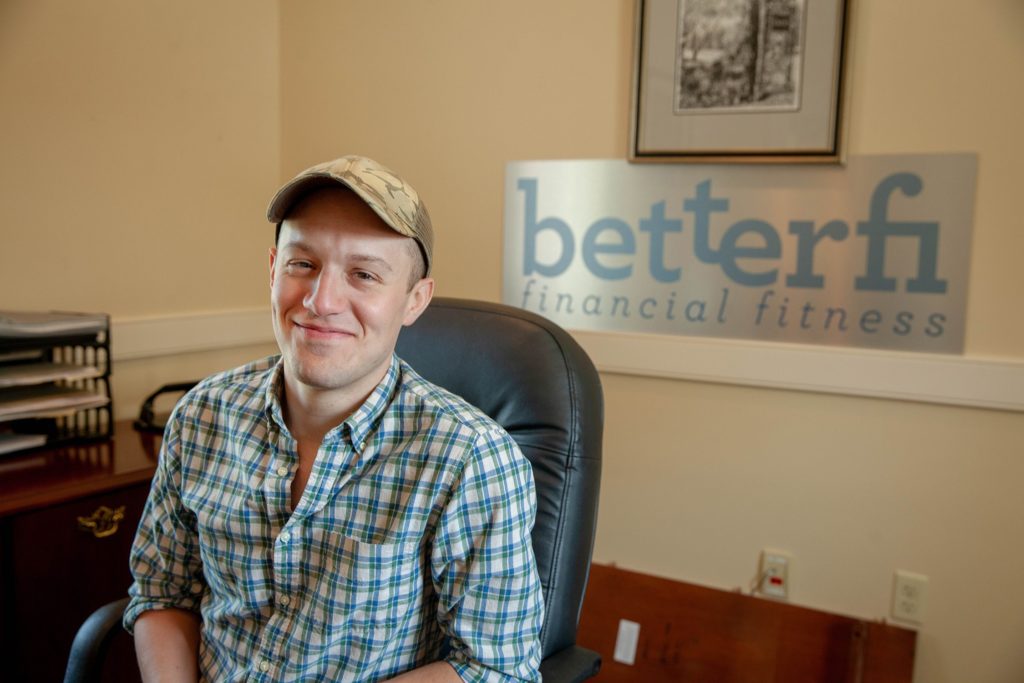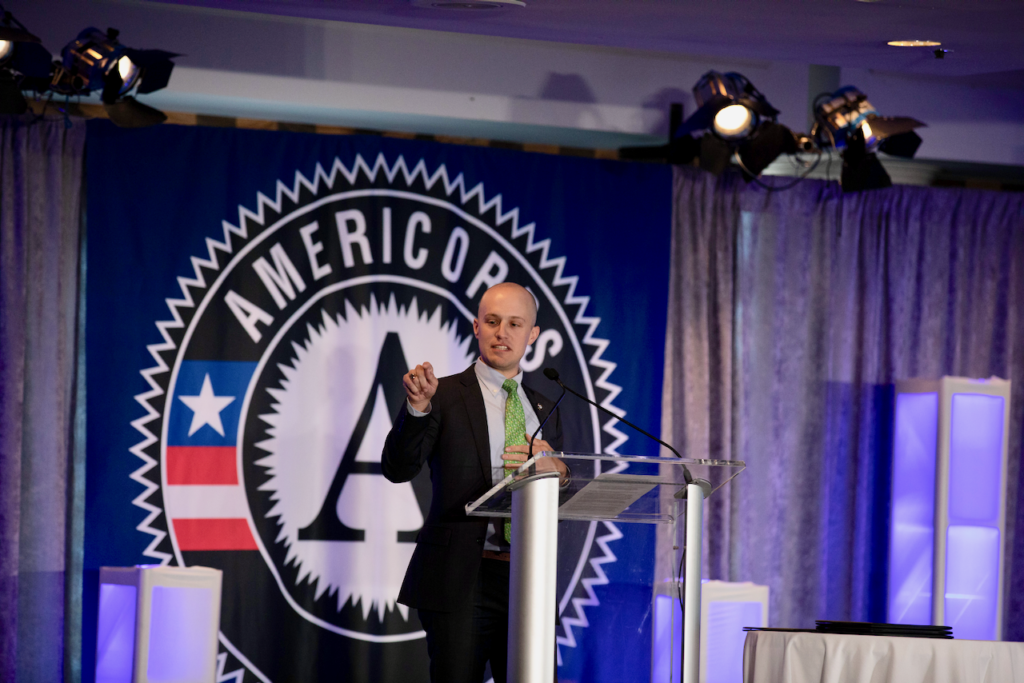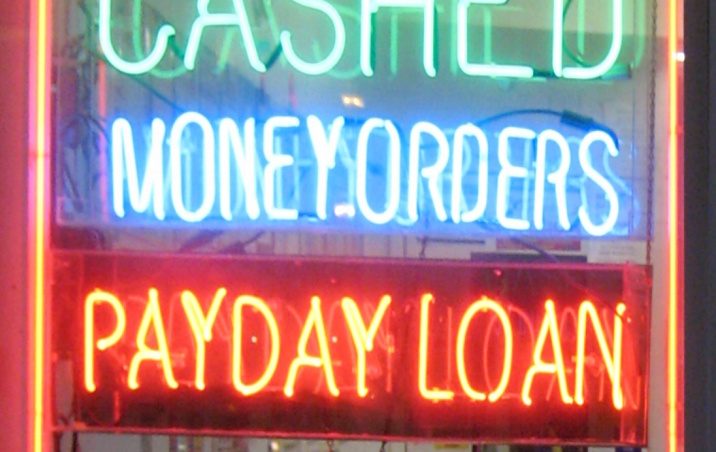At Expensivity, as our name implies, we’re concerned with the gravity of how expensive things are. This isn’t just at the top end of the scale, but at the bottom end too. One of the most grievously expensive monstrosities at the bottom end of the financial scale is the “payday loan.” It is the province of predatory lenders who place desperate people into unsustainable debt by giving them small and supposedly short-term loans at interest rates in the hundreds of percent. Morally speaking, it is a criminal practice and it needs to be stopped.
One of the heroes trying to fight this injustice is Spike Hosch, the founder and executive director of BetterFi, a non-profit entity working a new financial angle to free people trapped in the payday loan cycle and to break the back of the predatory loan industry. He kindly took the time to answer some of our questions:
Expensivity: Where are you from, Spike, and where did you go to college?
Spike: I am from Covington, Louisiana — a town just outside of New Orleans. I serendipitously happened upon Sewanee in my college search, and became hooked with the place when I visited (seeing the foothills of the Cumberland Plateau in fall will do that after 17 years in Louisiana). I spent 4 years studying here in Tennessee before leaving to work abroad, and then I returned to “the Mountain” some 4 or 5 years ago.
Expensivity: Did your education inform your present career focus, or was it more your life and work experience that led you to where you are today?
Spike: It is certainly a combination of both. My degree was basically an interdisciplinary degree in things I was interested in, which informs a lot of my “why” — it was my work experience afterwards that certainly helped me decide “what” and “how.”
Expensivity: Could you explain what a payday loan, sometimes called a “juice loan,” is, and how people get into trouble with them?
Spike: I think ‘traditional’ juice loans have been pushed out of the market by payday lenders! Loan sharks might break your knee caps, but they’d charge less interest.
A payday loan is generally marketed as a short term bullet loan that solves a short-term liquidity issue for people with limited or no access to conventional credit. The “short term” of the loan is usually 2 weeks or a month, a “bullet loan” being one that is repaid entirely at one time at the end of that term, a “liquidity issue” generally being a lack of cash to pay for some expense, and “conventional credit” being more affordable options like an installment loan from a bank or a credit card.
Beyond questionable marketing by lenders and loan terms that obfuscate a loan’s likely cost, people get into trouble with payday loans because the loans are extremely expensive and also generally an option of last resort. While the loans are marketed as short-term loans, borrowers of these loans typically cannot repay the entire loan back at the end of its term. The borrower can “roll over” the loan again and again, but accrues the full set of interest and fees each time.
When someone in Tennessee borrows $500 in payday loans to repair their car, they probably know that agreeing to pay $691 in a month is a bad idea. If they didn’t have $500 to cover whatever expense cropped up, their odds of having $691 in a month are probably equally slim, and the odds that they can even regularly cover the $191 in interest and fees that will accrue each month that they roll over is not great. They generally find themselves rolling over the loan again and again, paying as much as they can (which, if it does not cover the interest and fees of the loan, means the loan grows in size).
Expensivity: Were there some formative experiences that led to your establishment of your company, BetterFi? How did you get interested in helping people get off payday loan dependency and start your company?

Spike: There are too many to list, but my time working in alternative finance abroad definitely contrinbuted.
Shortly after graduating from Sewanee and with the help of one of my Sewanee professors, Yasmeen Mohiuddin, I interned in Bangladesh at the Grameen Bank. The Grameen Bank is considered one of the pioneers in “microfinance,” and their founder Muahammad Yunus created a group lending model that required prospective borrowers (who could not get credit from banks) to self-select their groups in order to leverage personal relational knowledge as a sort of collateral. Loans were made solely for income-generating activities, where the additional generated income exceeded the cost of the loan.
After Bangladesh, I worked for a Mongolian bank called XacBank as a Princeton in Asia Fellow and then as an employee. One of the credit product lines we worked with was a type of microloan similar to those used at Grameen, though in this case the loans were made to local families who relied on coal stoves to stay warm in the winter. The loans provided funds to purchase an improved stove that used less coal — the loans in this case were not to generate income but to save income. This is a simplification, but in both these places credit was being deployed as a tool for the poor to end up better off. Very basically, significant chunks of prospective margin were left on the table in order to prioritize the social benefit of the product (getting borrowers away from loan sharks).
Upon finding out that payday lenders in the US charge multiple times more than the loan sharks in Bangladesh and Mongolia, I returned to Sewanee as an AmeriCorps VISTA and intended to establish some sort of finance-oriented social enterprise. I found that entities existed to deal with affordable housing and even business loans, but that there were few alternatives to payday lenders in the US and exactly zero entities that ‘bailed out’ people from payday loans. In the area around Sewanee I also found that some churches were acting as a lender of last resort to their congregation in order to try and stave off dependence on payday lenders.
Connections and resources in Sewanee aligned to give me an opportunity to do something about payday loans by creating an alternative, so that is what I am doing.
Expensivity: Do you have some statistics–for instance, how many Americans are trapped in the payday loan world and what’s the average level of debt for individuals or families trapped in the payday loan cycle?
Spike: It has been a while since I have dived into the most recent data, but the lobbyist group for predatory lenders estimates that there is over $36 billion in outstanding payday loans in the US at any given time.
Around 22-25% of American adults are unbanked (they have no bank account and may or may not use ‘alternative’ financial products) or underbanked (they use alternative financial products like payday loans or rent-to-own schemes but have a bank account) — if I remember correctly, the unbanked chunk is 5-6% of American adults.
“There is over $36 billion in outstanding payday loans in the US at any given time.”
PEW Charitable Trusts has published studies over the years and estimates that the typical American payday loan borrower borrows $375, rolls the loan over partially at least 4 times, and pays about $520 in interest and fees over the 5 months they owe the loan.
One big caveat is that many states have variations on the payday type loan which are not captured in studies on payday loans. These loans can be similarly pernicious. For example, Tennessee has things like “flex loans,” “flex credit,” and “title pledge” (car title) loans which are not captured in studies evaluating payday loans. The average car title loan borrower in Tennessee borrows far more than $375 (nearly $950, on average) and rolls over the loan an average of eight times. If that typical borrower is paying the entirety of the interest and fees to roll over the loan and nothing more, they will pay over $1,600 to roll the loan over those 8 times and still owe the entire $950 principal.
Expensivity: Tell us a story: what’s the worst case of payday loan dependency you’ve encountered or heard of?
Spike: There are some of our clients who have been in extraordinarily dire straits and have had unbelievable runs of bad luck, and in doing our ability-to-repay evaluations during clients’ application processes I have seen some individuals who have dug themselves so deep on a carousel of loans that we realistically had no chance of helping them as even a loan at our much lower rates and longer terms would be more than they could afford. There are definitely dramatic stories, but I’d rather share two real instances that line up with the typical borrowers in Tennessee and demonstrate how easy it is to fall into the trap or dependence:
One young couple that had never used any short-term loans before borrowed $950 as a ‘flex loan’ (264% APR — a far stretch from the worst offenders in some states) from an online Tennessee lender to cover some routine vehicle expense when a series of other expenses left them short. They mistakenly assumed the rate would be like a credit card and so started making payments of $200 a month, and around a year later, when they were still being charged $200 per month, they finally investigated. $200 did not cover the interest and fees of their loan, and even after paying $2,400 over the course of a year, they now owed approximately $1,060.
Another very similar example was with a man who took out two payday loans from a local lender to cover high utility bills that had stacked up over the course of a winter — in Tennessee the rate permitted is higher if the loans are $250 or less, and the lender offered to lend him $500 but only if he borrowed it in the form of two $250 loans. He found himself in a very similar situation to the couple I described above: he owed $191 in interest and fees each month simply to roll over the $500 loan. Since he made less than $1,500 per month, some months he could afford the $191 or even a little extra, but often he could only put $100 or $150 on the loan. He found us after about 7 months of making payments and his loans had grown to a bit over $700.

These kinds of situations are not really remarkable — they would be remarkable if either of them had ever found themselves suddenly in a situation where they could pay the loan off before it accrued another 22% or 38% in monthly interest.
Expensivity: How would you help a person in this condition? Do you help them consolidate their loans at a lower rate and set up a payment plan? How does your system work?
Spike: You’ve got the idea. We do some basic underwriting of the loan in the application process (we evaluate their ability to pay based on a simple budget from the client’s reported expenses and then we verify addresses, phone numbers, income, bank accounts, and previous payments on their existing loans) to ensure 1) that they are not in a situation where even debt consolidation would not help and 2) that we think they are likely to repay the loan to us. If they are in a situation where our credit services will be of no use we can offer financial coaching or refer them to a local Legal Aid office to figure out other options.
We generally do not consolidate all of a client’s debt at the outset, but pick a single loan to assist with (with us they will pay less per month, pay less frequently, and pay less overall). If the client demonstrates that they will prioritize repaying us over the next couple of months, we will then help them by consolidating their other outstanding debtCurrently we cap all of our loans at 24% per year (we have opted for a state lending license that legally caps us at 30% per year), and we only offer installment loans (payment plans). For example, let’s say the man I referenced earlier borrowed $500 from a payday lender and had been paying $191 per month so it did not increase. We would buy out the $500 from the payday lender and probably amortize it over 6 months ($89.26 per month), netting us just around $36. Our rate is basically like an expensive credit card’s rate.
We also offer complementary financial services including financial coaching (starting with basic budgeting) and free income tax preparation.
Expensivity: Given the average level of payday loan dependency, how long a process is it to get out of debt?
Spike: Our average loan is for right around $1,200 and the average term is around a year. It will vary based on the individual’s circumstances, most importantly their income. A client who is on disability and makes under $800 per month will of course have a longer termed loan, though nearly every loan of ours is with a term under 2 years. Our goal is to be an intervention in getting them out of the payday loan debt trap and then make resources available that will keep them out of it (whether it is financial coaching, connections to a bank, building a credit score, or coming to us the next time they need a loan).
“One young couple that had never used any short-term loans before borrowed $950 as a ‘flex loan’ (264% APR)… They mistakenly assumed the rate would be like a credit card and so started making payments of $200 a month… even after paying $2,400 over the course of a year, they now owed approximately $1,060.”
Expensivity: Your website says that BetterFi is a non-profit 501(c)(3), but you need some money to function, do you get this from donors or from the clients, or both? What are your operational expenses? Is anyone salaried? How do you maintain accountability?
Spike: I consider our current stage to be very much a pilot stage — we are almost wholly donor funded at this point. We do generate revenue from interest on our clients’ loans, and if a payment is more than 15 days late we will add a $5 late fee to the payment. Our goal is to eventually scale up so that our operational expenses can be covered from the interest revenue of our lending program, and then donations can be used to provide additional complementary services, expand our footprint, or reduce the cost of our services.
We are also now a certified Community Development Financial Institution (CDFI), which certifies that our lending operations, complementary financial services, and governance meet certain requirements set by the Department of the Treasury’s CDFI Fund and validates that our organization provides fair and affordable credit and programs to low income individuals and families. We hope that it also will open up doors for funding from conventional banks, which can meet certain requirements of the Community Reinvestment Act by investing in CDFIs.
Our operational expenses are currently right around $100,000 per year, the majority of which is for systems and overhead that should not change drastically as we scale up. We have one salaried employee (myself) whose salary is set by our board at the federal minimum, and we pay a small cost-share for an AmeriCorps VISTA volunteer who is allocated through Sewanee’s Office of Civic Engagement. During the academic year we have work study service interns from Sewanee who are paid from funds that the University maintains.
In terms of accountability, we regularly update our GuideStar profile which will allow users of their site to compare our expenses to other nonprofits and organizations, and we, as all 501c3s do, make our federal 990 tax returns public as we submit them to the IRS. We are a licensed lender in Tennessee and the Tennessee Department of Financial Institution carries out regular examinations of all lenders in the state to ensure compliance with state and federal laws. We have a stellar working board with significant experience in nonprofit management, academic civic engagement, community development finance, corporate banking, local banking, and business — one of their roles is maintaining accountability of the organization to its stakeholders. Finally, as the director of the organization, I try to be as transparent as possible in answering any questions submitted to us.
Expensivity: What advice would you give to someone considering a payday loan? What should they do instead?
Spike: Don’t! But unfortunately there are no good alternatives. If they are in Tennessee then they can talk to us.
In almost every case a payday loan borrower is not just kicking the can down the road, but is kicking a can down the road that will be significantly bigger each time they catch up with it. If the loan is for a car repair and the borrower can pay it off in full the first time around, then of course they should do that to keep their car running so they can get to work. I can’t begrudge anyone taking out a payday loan to keep the lights on, but if someone is taking out a loan to keep the lights on then they will probably still end up with the lights cut off, except when it happens down the road they’ll also be in debt to a payday lender.
Exhaust any other option first: family, friends, churches, or advances from the employer. If the loan is to keep a means of transportation to work, see if someone can carpool. This is advice for anyone, but especially if anyone reading has had to rely (or even considered relying) on one of these loans in the past: immediately prioritize making a real budget to better prepare for an eventual surprise expense.
Expensivity: Where do you want to be five years from now? Ten years from now? What is the best outcome you can imagine?
Spike: Our immediate next step is to finish “proving” the model by getting up to a sustainable scale. If we can make the economics of the model work (i.e. poach good payday loan clients at credit card rates) with donations and incentivized, concessionary bank funds, then we can proceed with figuring out how to do it while providing some sort of return on investment. If we can do it with a return on investment for investors, we will be able to grow much more quickly.
I want us to be self sustaining on interest revenue well before 5 years, with multiple locations or off-shoots by 10. Once we make this first piece work we will make our model readily available to anyone who wants to start a non-profit or for-profit alternative to predatory lenders in their community. Getting rid of predatory lending will improve the lives and economics of people and institutions across the board.
“Getting rid of predatory lending will improve the lives and economics of people and institutions across the board.”
The best outcome is for BetterFi and ‘economic justice’ entities like us is to crowd out the type of high interest predatory lenders we see today. I would like to see BetterFi being of a size where we can give any prospective borrower one initial chance, mitigating losses from first-time borrower delinquency with low delinquency rates among second- or third-time borrowers, until they ‘graduate’ to be reliable customers at conventional banks.
→ An Inteview with Spike Hosch, Founder of BetterFi
→ BetterFi Honored with National AmeriCorp Award

https://www.betterfi.co/news/2019/9/30/tennessees-betterfi-honored-with-national-americorps-award
